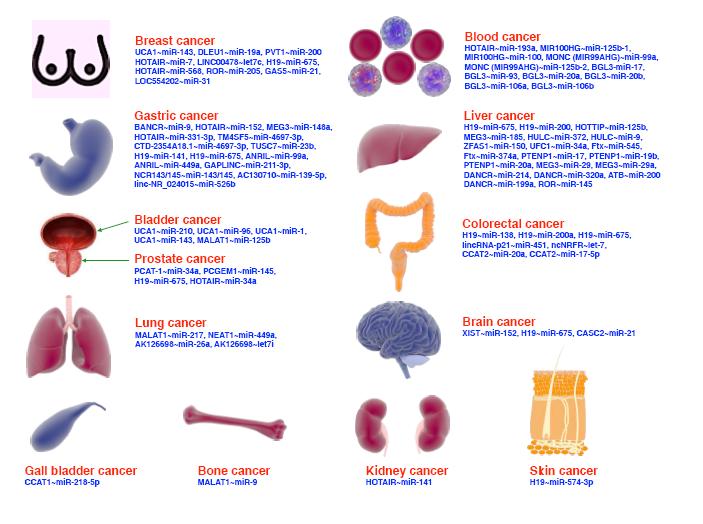| 1. |
Nasim F, Sabath BF, Eapen GA. Lung cancer. Med Clin North Am, 2019, 103(3): 463-473.
|
| 2. |
Bray F, Laversanne M, Sung H, et al. Global cancer statistics 2022: GLOBOCAN estimates of incidence and mortality worldwide for 36 cancers in 185 countries. CA Cancer J Clin, 2024, 74(3): 229-263.
|
| 3. |
Sung H, Ferlay J, Siegel RL, et al. Global Cancer Statistics 2020: GLOBOCAN estimates of incidence and mortality worldwide for 36 cancers in 185 countries. CA Cancer J Clin, 2021, 71(3): 209-249.
|
| 4. |
丁璐璐, 朱健, 张永辉, 等. 1990-2019年中国归因于吸烟的肺癌疾病负担研究. 现代肿瘤医学, 2024, 32(1): 141-146.Ding LL, Zhu J, Zhang YH, et al. Disease burden of lung cancer attributable to smoking in China from 1990 to 2019. Mod Oncol, 2024, 32(1): 141-146.
|
| 5. |
马运, 袁浩冉, 胡昊, 等. 1990—2019年中国归因于烟草的肺癌疾病负担变化趋势分析. 现代预防医学, 2024, 51(8): 1345-1351.Ma Y, Yuan HR, Hu H, et al. Trend of disease burden of lung cancer attributed to tobacco in China, 1990-2019. Mod Prev Med, 2024, 51(8): 1345-1351.
|
| 6. |
Siemiatycki J, Richardson L, Straif K, et al. Listing occupational carcinogens. Environ Health Perspect, 2004, 112(15): 1447-1459.
|
| 7. |
Mild KH, Mattsso MO, Hardell L, et al. Occupational carcinogens: ELF MFs. Environ Health Perspect, 2005, 113(11): A726-727.
|
| 8. |
胡守财, 陶堰成, 马浩天, 等. 1990~2019年中国非风湿性瓣膜性心脏病疾病负担及变化趋势分析. 中国循环杂志, 2024, 39(08): 806-812.Hu SC, Tao YC, Ma HT, et al. Disease burden and changing trend of Non-rheumatic Valvular Heart Disease from 1990 to 2019 in China. Chin Circ J, 2024, 39(08): 806-812.
|
| 9. |
GBD 2021 Causes of Death Collaborators. Global burden of 288 causes of death and life expectancy decomposition in 204 countries and territories and 811 subnational locations, 1990—2021: A systematic analysis for the Global Burden of Disease Study 2021. Lancet, 2024, 403(10440): 2100-2132.
|
| 10. |
马一楷, 王耿, 刘彩霞. 1990—2019年中国归因于吸烟因素的食管癌疾病负担分析. 中山大学学报(医学科学版), 2024, 45(4): 593-601.Ma YK, Wang G, Liu CX. Disease burden of Esophageal Cancer attributable to smoking from 1990 to 2019 in China. J Sun Yat-Sen Univ (Med Sci), 2024, 45(4): 593-601.
|
| 11. |
Tichenor M, Sridhar D. Metric partnerships: Global burden of disease estimates within the World Bank, the World Health Organisation and the Institute for Health Metrics and Evaluation. Wellcome Open Res, 2019, 4: 35.
|
| 12. |
吴霞, 张译匀, 姚承志, 等. 1990-2021年中国归因于饮食因素的缺血性心脏病疾病负担变化趋势及预测研究. 中国全科医学, 2025, 28(3): 305-312.Wu X, Zhang YY, Yao CZ, et al. Trend and prediction of changes in the disease burden of diet-related Ischemic Heart Disease in China, 1990—2021. Chin Gen Pract, 2025, 28(3): 305-312.
|
| 13. |
GBD 2017 Mortality Collaborators. Global, regional, and national age-sex-specific mortality and life expectancy, 1950-2017: A systematic analysis for the Global Burden of Disease Study 2017. Lancet, 2018, 392(10159): 1684-1735.
|
| 14. |
刘智, 罗长春, 李超, 等. 1990—2021年中国矽肺疾病负担研究. 公共卫生与预防医学, 2024, 35(6): 16-20.Liu Z, Luo CC, Li C, et al. Study on the burden of silicosis in China in 1990-2021. J Pub Health Prev Med, 2024, 35(6): 16-20.
|
| 15. |
Yi X, He Y, Zhang Y, et al. Current status, trends, and predictions in the burden of silicosis in 204 countries and territories from 1990 to 2019. Front Public Health, 2023, 11: 1216924.
|
| 16. |
Yang X, Zou J, Kong D, et al. The analysis of GM (1, 1) grey model to predict the incidence trend of typhoid and paratyphoid fevers in Wuhan City, China. Medicine (Baltimore), 2018, 97(34): e11787.
|
| 17. |
Huang JC. Application of grey system theory in telecare. Comput Biol Med, 2011, 41(5): 302-306.
|
| 18. |
Bade BC, Dela Cruz CS. Lung cancer 2020: Epidemiology, etiology, and prevention. Clin Chest Med, 2020, 41(1): 1-24.
|
| 19. |
Qiu H, Cao S, Xu R. Cancer incidence, mortality, and burden in China: A time-trend analysis and comparison with the United States and United Kingdom based on the global epidemiological data released in 2020. Cancer Commun (Lond), 2021, 41(10): 1037-1048.
|
| 20. |
Costa SNL, Fernandes FCGM, Santos CAD, et al. Gender and regional differences in lung cancer mortality in Brazil. Asian Pac J Cancer Prev, 2020, 21(4): 919-926.
|
| 21. |
Coultas DB, Samet JM. Occupational lung cancer. Clin Chest Med, 1992, 13(2): 341-354.
|
| 22. |
Fulop T, Kotb R, Fortin CF, et al. Potential role of immunosenescence in cancer development. Ann N Y Acad Sci, 2010, 1197: 158-65.
|
| 23. |
Brusletto B, Nielsen RA, Engan H, et al. Labor-force participation and working patterns among women and men who have survived cancer: A descriptive 9-year longitudinal cohort study. Scand J Public Health, 2021, 49(2): 188-196.
|
| 24. |
Wang C, Wu Z, Xu Y, et al. Disparities in the global burden of tracheal, bronchus, and lung cancer from 1990 to 2019. Chin Med J Pulm Crit Care Med, 2023, 1(1): 36-45.
|
| 25. |
Kocarnik JM, Compton K, Dean FE, et al. Cancer incidence, mortality, years of life lost, years lived with disability, and disability-adjusted life years for 29 cancer groups from 2010 to 2019: A systematic analysis for the Global Burden of Disease Study 2019. JAMA Oncol, 2022, 8(3): 420-444.
|

 1/5
1/5
